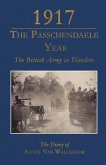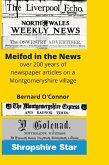Most people in this country have never heard of the tiny community of Bouldon, near Diddlebury, Shropshire. There are only thirteen houses, a dairy unit and the Tally Ho public house. There was a Methodist chapel but it closed several decades ago. The hamlet is situated on the banks of Pye Brook where it enters Corvedale at the foot of the western slopes of the Brown Clee, the highest hill in the county. There have been people living in this area for thousands of years. Its sandstone is reported to have been used to tile the roofs of Roman villas in Yarchester and Wroxeter and provide window sills and the portico to Downton Castle, near Ludlow. It was recorded in the 1086 Domesday Book as having four households. It played an important role in the English Civil War as there was an iron furnace up the valley which provided cannons and cannonballs for the Royalist Armies in Ludlow, Shrewsbury and Bridgnorth. It had a water mill recorded in 1611 and it and the furnace are marked on John Roque's 1752 map of Shropshire. When the furnace with own waterwheel ceased operating at the end of the 18th century, the building was converted into a paper mill, then a house. Despite its small size, Bouldon has appeared in numerous newspaper articles over the last 200 years. Local historian Bernard O'Connor has compiled a selection to give the reader insight into the life and times of residents of Bouldon and its neighbouring parishes. It includes stories of the Tally Ho (licensed in 1844), its football, darts and dominoes teams, its farmers and farm labourers, crime and punishment, property sales, marriages, funerals and celebrations.







